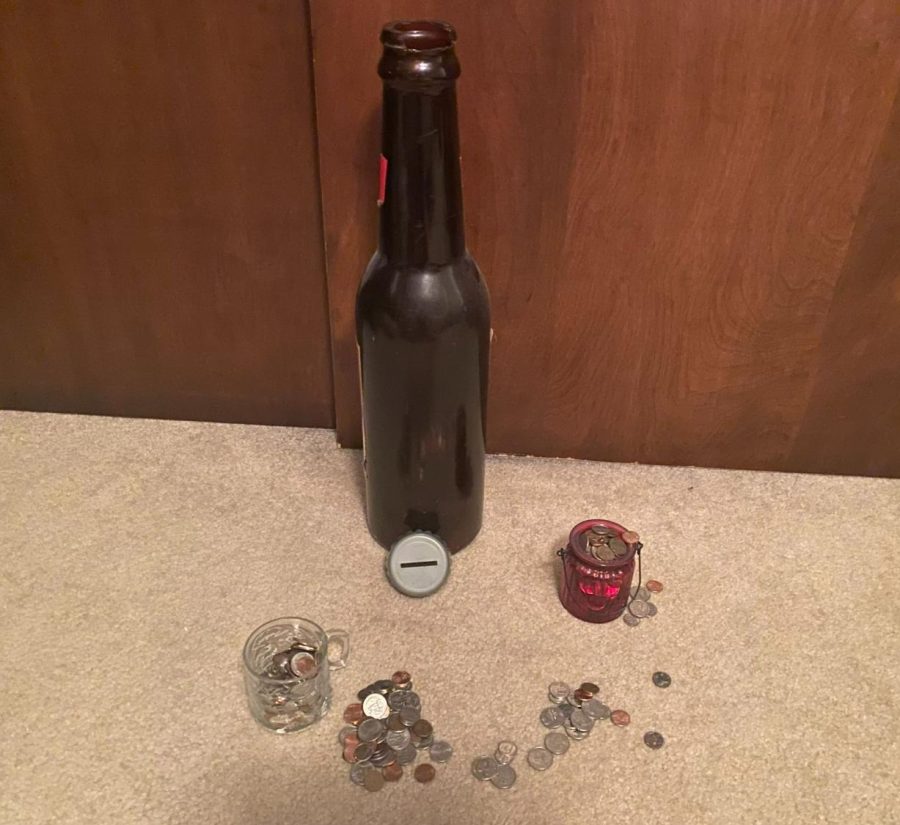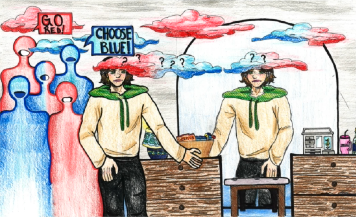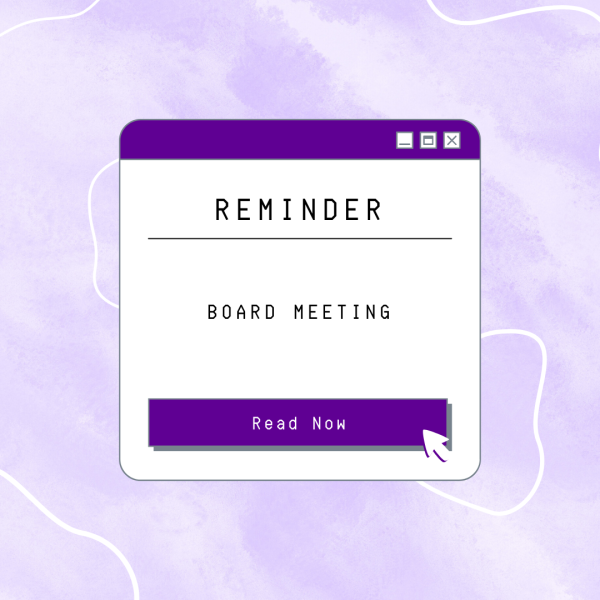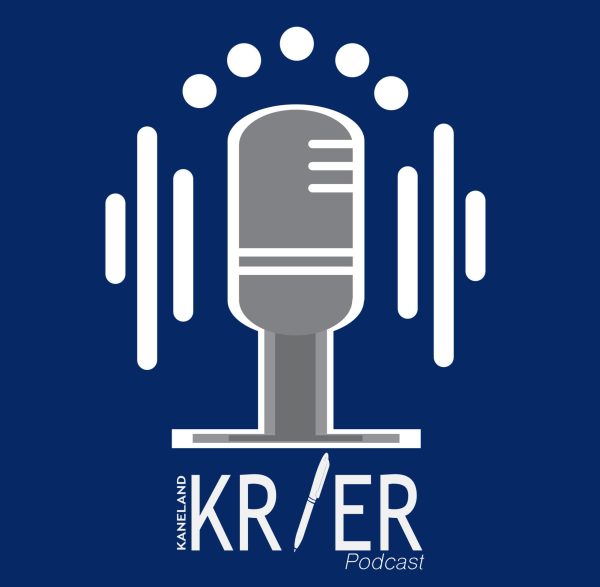Using spare change in purposeful ways
Photo By Ashley Vanderhoff
A large plastic bottle and two jars overflow with loose coins. Using spare change is a simple task that is easy and beneficial.
Deep in the corner of my parents’ closet is a plastic soda bottle, reaching at least two feet tall, dedicated only to spare change. I have a distinct memory of growing up with that bottle, the pile of change slowly growing alongside myself. As young children, my siblings and I would beg our parents to take it out and show us the rusting copper and faded dates on the coins. After all, our young minds made wild assumptions daily, and we were sure that there must have been thousands of dollars protected nightly by that impressive plastic bottle.
Now that I have grown up a bit, it is clear that the amount of money in that bottle was most likely closer to $50 than $1000. The value of the coins still seems just as relevant to me, but now for different reasons. Knowing that the coins sat there for so many years and could have instead been used to buy someone a warm meal is startling. While $50 from my parents’ collection might not have changed the world, it is undoubted that many families across the nation have similar jars, all holding unwanted and unused coins. If we were to spend those coins with the same urgency as if they were crisp $20 bills, they could have an actual impact, if not to help us, then to help someone else.
Even when we want to use our spare coins, no one wants to brave the long lines at fast food restaurants or grocery stores to slowly count out the seemingly countless dimes and pennies, maybe except for the elderly. Still, the embarrassment of holding up the cashier and customers behind us usually diminishes our dedication to the matter. However, spending your change on everyday items like food or clothes does not have to be so strenuous.
Check-out lanes have made using your spare change easy and fast. While I have always been one to default to Target or Walgreens for my quick errands, Walmart recently caught my interest with how easy it was for me to trade in my coins. Being one of the most popular and convenient stores to shop at for many needs, Walmart has made its self-checkout lanes easy and fast. The machines, introduced back in 2020, are easy to use and now have built-in coin counters. While most of us have become used to inserting our coins one at a time, the new self-checkout machines have a slot where you can dump all your coins at once. The machine then counts the change for you. These new, user-friendly machines make spending your coins in public significantly easier.
While we tend to let our spare change pile up around the house in jars, drawers and cars, allowing it to build up isn’t necessarily bad, as long as there is an associated goal. While my parents’ soda bottle acted almost as a trash can for whatever change was left unwanted in our pockets, there are plenty of ways to save change meaningfully.
One way to purposefully keep a collection of coins is to save them for holiday shopping at a later date. Dedicate your change to a specific jar or box, and don’t touch it all year. Then, when the time comes to buy your parents or siblings a holiday gift, you have a small amount of savings to use. If this is not appealing to you, maybe a group effort from your family to save up for a vacation could be worthwhile. Create a dedicated space so each family member can compile their spare change throughout the year (or longer). After a while, you can take your pennies and dimes to the bank, and perhaps they can cover at least a couple of nights somewhere enjoyable. A wholesome, more short-term option might be giving it to your younger siblings. Allowing young children to manage change is a great way to get them practicing to save up their own money when they are older. A simple, more patient option is to keep some quarters in your car. Most cashiers will not mind much when people pay them in coins, especially if it is just a few quarters for a morning coffee. This way, you’re more likely to use your quarters, and the car won’t just be another spot for all of your loose change to disappear.
Still, sometimes it is hard to dedicate our change to anything. If you don’t see yourself remembering to grab your coins before heading out and if vacations aren’t practical within your household, there is always someone else who could use them.
Everyone is familiar with tip jars, small containers into which customers can put a gratuity, usually located on a fast food restaurant counter. Instead of throwing your change in a purse or bag that is easy to lose track of, try to give it back instead. Workers at all different places of business will appreciate the tip. Perhaps a more impactful way to use your change is to donate it to a charity. It is also not uncommon to see a donation tin next to a tip jar at a store or restaurant. According to Charities Aid Foundation (CAF), a charity that operates in the United Kingdom, United States and Canada, the U.K. donated an estimated £320 million pounds in loose change to charity in 2017. That equates to about $357 million U.S. dollars. That number reveals that when a large community of people contributes to a common objective, significant goals can be accomplished.
Try not to feel like your coins are purposeless. Loose change doesn’t have to sit meaninglessly on our shelves for an indefinite period. Instead, we can apply it to something productive in many ways.

Name: Ashley Vanderhoff
Position: Design and Ads & Business Executive
Graduation Year: 2023
A Few Sentences...










